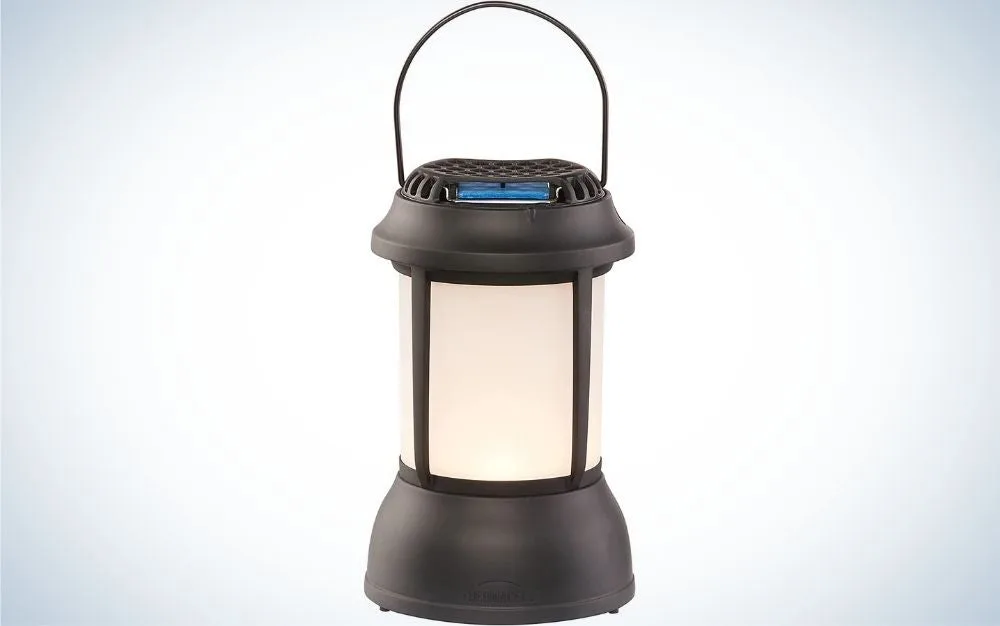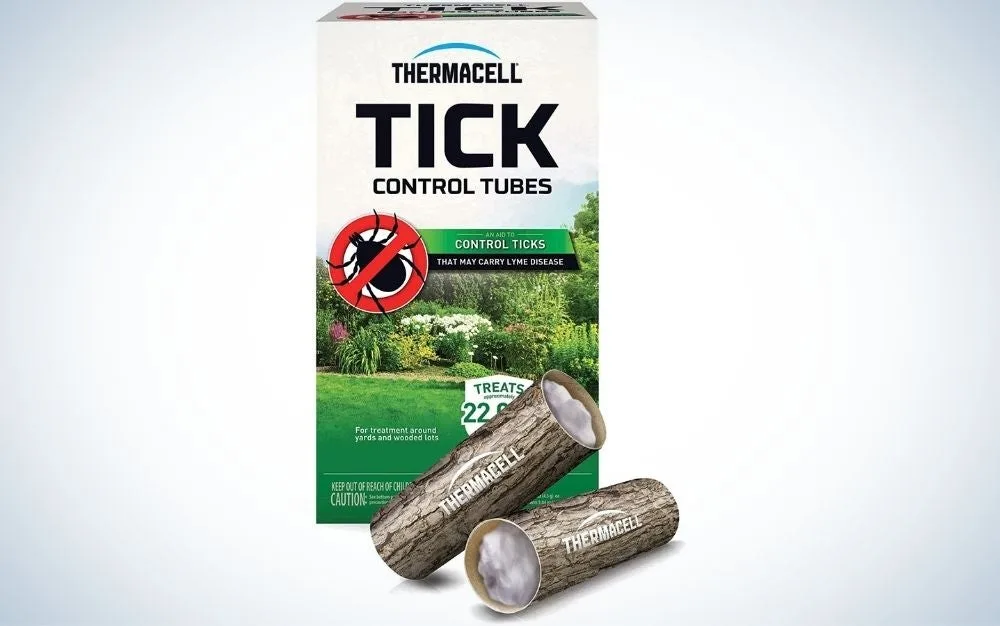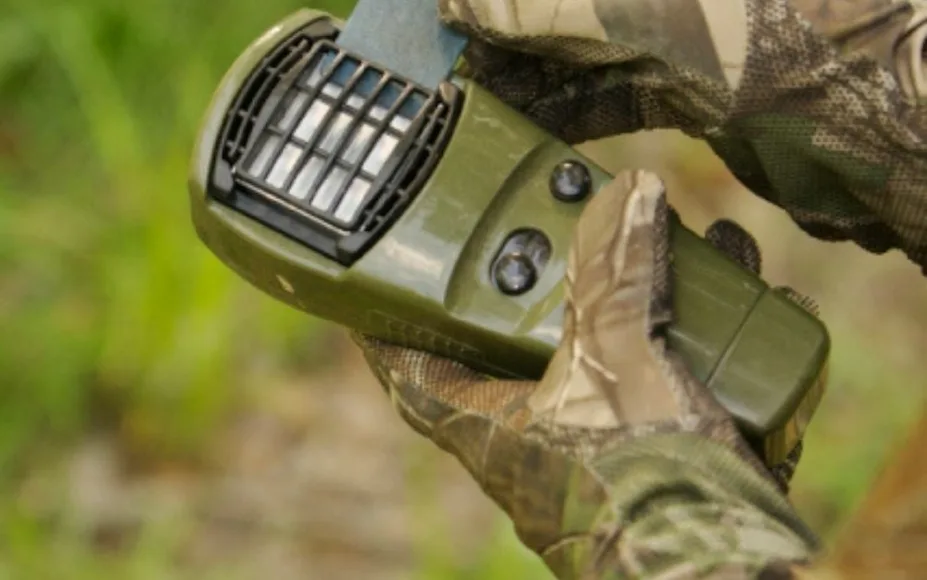_We may earn revenue from the products available on this page and participate in affiliate programs. Learn more ›
_
Best Portable

Thermacell MR300 Portable Mosquito Repeller
LEARN MORE
Summary
A 15-foot coverage zone with a device that weighs only four ounces.
Best for House

Thermacell Radius Zone
LEARN MORE
Summary
This rechargeable device dispenses mosquito repellent for 6.5 hours—and works while charging.
Best for Backyard

Thermacell Perimeter System
LEARN MORE
Summary
These two Thermacell stakes work together to provide 450 square feet of mosquito-free space for 4 hours.
How to repel mosquitoes? That question has bugged humans for millennia—which is why mosquito repellents
are so popular**.** Most of the time, mosquitoes are gentle pollinators who flit from flower to flower, sipping nectar and spreading pollen for plants like orchids and goldenrod. But once the urge to lay eggs takes over, female mosquitoes need more than the syrupy vegetarian diet their brothers enjoy full-time. They need blood.
To get that blood meal, a mosquito relies on a suite of receptors on its antennas and mouth that sniff out carbon dioxide and other chemicals that potential victims (i.e. you) give off. It follows the scent, lightly touches down, and unsheaths its proboscis.
This highly-modified mouth is actually six needles called stylets. Two of these are serrated for slicing through the victim’s skin. Another pair holds the wound open. Then, the mosquito uses one stylet—the labrum—to prod around, seeking a blood vessel to pierce. Once in, the mosquito uses this needle like a straw. The last stylet—the hypopharynx—drips mosquito saliva into the wound. This complex spit prevents clotting and tamps down the victim’s immune response.
To make matters worse, sometimes mosquito saliva contains viruses or parasites picked up from previous victims. The diseases caused by those hitchhiking microorganisms kill millions of people every year—making the mosquito the most deadly animal on earth
.
The best Thermacell mosquito repellents are designed to keep those disease-carrying insects and their razor-sharp mouthparts far away.
Best for Backyard: Thermacell Perimeter System
Best for House: Thermacell Radius Zone
**Best for Night: Thermacell Lantern
**
Best for Campsites: Thermacell Backpacker Mosquito Repeller
Best Portable: Thermacell MR300 Portable Mosquito Repeller
Best for Tick Control: Thermacell Tick Control Tubes
How Does Thermacell Work?
Thermacell mosquito control products are widely available, but mosquito repellent was actually a huge military innovation in the 1940s. The problem of mosquito-borne disease became an issue for Americans because of military actions in parts of Africa and Southeast Asia where those illnesses are a major risk. According to military experts, up to 75 percent of soldier deaths weren’t from combat; they were from disease.
And, in the case of mosquito-borne malaria, the situation was dire. This disease is caused by a tiny protozoan the mosquito picks up, and in some areas, mosquitoes are such effective vectors of malaria that 100 percent of them carry the disease. Plus, people who have never been exposed to malaria are uniquely at risk for acute infections, which can lead to deadly complications and even chronic malaria.
That’s how the insect repellent DEET came to be invented by the US Department of Agriculture’s Samuel Gertler
in 1946. At first, the product was only used by the military, but in the 1950s, it hit the consumer market. It’s still a widely used mosquito repellent, but it has some downsides, including concerns about how safe it is for children, and environmental effects. Plus, it smells pretty bad.
One effective alternative is Allethrin. This is an odorless, synthetic version of a mosquito-repelling compound that naturally occurs in chrysanthemum flowers. Thermacell devices heat up cartridges or pads that contain Allethrin and disperse it into the air around you. It’s up to 98.6 percent effective against mosquitoes in a 15-foot zone.
Outdoor Mosquito Control: Keep Mosquitoes Away from Your BBQ
Allethrin works by acting on the mosquito’s nervous system, paralyzing the insect or killing it outright. This mosquito-repelling compound can be loaded into cartridges or impregnated into inserts and then diffused into the air with heat. That produces a zone of mosquito control coverage.
Allethrin is most effective in a 15-foot zone of the dispersal device, But field tests show that these devices provide some mosquito control coverage up to 25 feet away from the unit.
One option for maximizing the zone of mosquito protection is a dispersal system that delivers allethrin at multiple points to create a much larger protected zone. Allethrin needs steady heat to diffuse it, so when it comes to outdoor mosquito control, it’s important to consider how the allethrin dispersal device is powered. Some mosquito repellent devices use replaceable butane cartridges, which provide about 12 hours of allethrin-diffusing power a pop. A more convenient solution is a rechargeable mosquito control device like Thermacell.
Best Thermacell Repellents: Reviews & Recommendations
Best for Backyard: Thermacell Perimeter System
Best for Backyard

Pros
Can cover a large area
Cordless
Easy to refill
Cons
Expensive
One of the top mosquito repellants
, Thermacell’s perimeter system includes two stakes that each deliver 4 hours of allethrin mosquito control at points 15 feet apart to maximize the mosquito-free zone. The effect is additive, so users can place extra stakes to increase the size of the protected area. It’s perfect for backyard mosquito control.
Because remembering to reorder cartridges isn’t for everyone, the Thermacell perimeter system is a hassle-free alternative that provides continuous power to keep mosquitoes away for about 6.5 hours. These rely on a lithium-ion battery that plugs into a charging block similar to a phone charger. And since these mosquito control units can operate while charging, running out of power isn’t a problem.
Best for House: Thermacell Radius Zone
Best for House

Pros
Long battery life
Covers 15-foot area
Requires just pressing a button to use
Cons
Cartridges don’t last very long
The Thermacell Radius Zone uses a lithium-ion battery to repel mosquitoes for 6.5 hours on a single charge. This device uses 12-hour refills and operates while charging, so you can use it for as long as you need. It’s TSA-approved, so it’s ready to travel.
Best for Night: Thermacell Lantern
Best for Night

Pros
Scent- and spray-free
Attractive aesthetic
Provides ample light
Cons
Small radius of protection
Thermacell’s lantern relies on 12-hour fuel cartridges and 4-hour allethrin mats to pump out mosquito-fighting allethrin—plus an LED lamp powered by AAA batteries. This design is ideal to hang at 15-foot intervals around a pool or patio to maximize mosquito control and add both light and ambience.
Best for Campsites: Thermacell Backpacker Mosquito Repeller
Best for Campsites

Pros
Lightweight at just 4 ounces
DEET- and scent-free
Works in just 15 minutes
Cons
Fuel canister is sold separately
Slathering yet more mosquito repellent onto your skin is often the last thing you want to do after a long hot day of hiking. But if the mosquitoes are thick, it’s either that or go hide in your tent until daylight—unless you have a mosquito repeller that’s made with campers in mind.
When space matters, Thermacell’s backpacker provides reliable mosquito-repelling action in an exceptionally convenient and lightweight design. This 4-ounce device repels mosquitoes in the same 15-foot zone as standard allethrin-dispensing devices, but is powered by a camping fuel canister and will provide 16 hours of mosquito protection. You’ll have a mosquito-free campsite in the middle of nowhere.
Best Portable: Thermacell MR300 Portable Mosquito Repeller
Best Portable

Pros
Lightweight and portable handheld design
Cordless and doesn’t require batteries
Heat-activated
Cons
Not fully waterproof
Mosquito control products only work if you bring them along—and if you’re the kind of camper who saws off your toothbrush handle to cut down your backpack’s weight, you may forgo repellers entirely. That’s a problem, because mosquitoes tend to worsen the farther you get from civilization. A portable mosquito repeller is the answer here.
This lightweight, 12-hour mosquito repeller requires only a butane cartridge and an Allethrin-impregnated mat to keep mosquitoes away. It weighs only four ounces and is perfect for packing along on a fishing, hunting, or camping trip.
Best for Tick Control: Thermacell Tick Control Tubes
Best for Tick Control

Pros
Can protect up to one acre
Only have to apply twice a year
Easy to use
Cons
Don’t hold up well in inclement weather
Mosquitoes might be the most dangerous animal, but they aren’t the only tiny threats lurking outside. Just like mosquitoes, ticks take bloodmeals and drip saliva into the wounds they create on their victims. And, as with mosquitoes, that tick spit sometimes carries hitchhiking microorganisms that cause debilitating diseases in humans. In fact, the CDC’s data summary
states that more than 50,000 Americans report tick-borne illnesses every year.
Outdoor bug repellents that target ticks are crucial to keeping outdoor spaces safe from diseases vectored by ticks. One innovative option are tick tubes designed by Harvard University’s School of Public Health, leveraging tick biology to take aim at diseases like Lyme, babesiosis, and anaplasmosis. The microbes that cause these illnesses reservoir in mice where they can be picked up by young ticks taking their first bloodmeal.
Tick tubes contain cotton impregnated with insecticide. That cotton is prime nesting material for mice, who drag the cotton home. There, the insecticide kills the ticks in the mouse’s nest, preventing those ticks from ever encountering humans—so the diseases they carry are stopped in their tracks.
Thermacell’s tick tubes contain a permethrin insecticide in cotton. When used twice a year in areas where nesting mice are likely to encounter them, these mess-free, biodegradable tubes are effective at getting rid of ticks
in the backyard.
FAQs
Q: Does Thermacell work?
When it comes to whether or not Thermacell products really work to repel mosquitoes, the answer is a clear yes. Field tests and peer-reviewed studies
conducted by researchers at the Department of Defense and Hacettepe University, among others, found that Thermacell products are up to 98.6 percent effective against mosquitoes in a 15-foot zone.
Q: Is Thermacell safe to breathe?
Thermacell is considered safe to breathe. All insecticides carry some risk, which must be balanced with the disease prevention they provide. Allethrin, a synthetic version of a mosquito-repelling compound that naturally occurs in chrysanthemum flowers, is the active ingredient in Thermacell products. Allethrin has been evaluated by the Environmental Protection Agency and is marked as toxicity class III—AKA slightly toxic or irritating—which means users should take care to follow the manufacturer’s guidelines when using the product.
Q: Does Thermacell kill bees?
Thermacell is not intended to kill bees, but is labeled as a slight risk to these important pollinators. As with all insecticides, the best practice is to move the product to a different area if foraging bees are present, and to take care to keep the product out of waterways and ground water by disposing of used refills and mats properly.
Final Thoughts on the Best Thermacell Repellents
Best for Backyard: Thermacell Perimeter System
Best for House: Thermacell Radius Zone
**Best for Night: Thermacell Lantern
**
Best for Campsites: Thermacell Backpacker Mosquito Repeller
Best Portable: Thermacell MR300 Portable Mosquito Repeller
Best for Tick Control: Thermacell Tick Control Tubes
While mosquitoes are simply a nuisance in some places, they can be thick in many remote outdoor areas and will absolutely ruin a trip if you don’t have a way to beat biting bugs.
The best Thermacell products are one important tool in the battle to keep mosquitoes away from you.
Why Trust Us
For more than 125 years, Field & Stream has been providing readers with honest and authentic coverage of outdoor gear. Our writers and editors eat, sleep, and breathe the outdoors, and that passion comes through in our product reviews. You can count on F&S to keep you up to date on the best new gear. And when we write about a product—whether it’s a bass lure or a backpack—we cover the good and the bad, so you know exactly what to expect before you decide to make a purchase.





